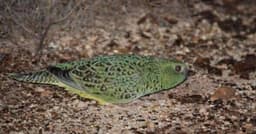Home / Environment / Tharparkar's Green Transformation: From Desert to Thriving Oasis
Tharparkar's Green Transformation: From Desert to Thriving Oasis
30 Oct
Summary
- Over 1.2 million trees planted in Tharparkar to combat desertification
- Saline agriculture projects transform barren land into productive farmland
- Vulture conservation efforts help recover endangered bird populations
As of October 2025, a remarkable transformation has taken place in Tharparkar, Pakistan, once known for its scorching heat and scarce rainfall. Through a collaborative effort between Thar Foundation and IUCN Pakistan, the region has become a thriving green landscape, home to one of Pakistan's most ambitious community-driven biodiversity conservation initiatives.
Over the past few years, the Thar Million Tree Programme has seen the planting of more than 1.2 million trees across Tharparkar, using the Miyawaki technique to combat desertification and transform a 100-acre stretch of barren land into a flourishing forest. These native species, such as Roheero and Kandi, have demonstrated remarkable resilience, with a survival rate of 72% and the ability to absorb over 123,000 tonnes of carbon, according to a 2022 IUCN study.
Alongside the reforestation efforts, Thar Foundation and IUCN have introduced innovative saline agriculture techniques, enabling local farmers to cultivate salt-tolerant crops like ladyfinger, tomatoes, groundnuts, and nutrient-rich fodder. This has transformed over 165 acres of once-barren land into productive farmland, providing self-reliance and dignity to the community.
Furthermore, the partnership has focused on conserving Tharparkar's biodiversity, particularly the critically endangered vulture population. Through extensive community engagement and the establishment of a Vulture Safe Zone, the vulture population has been recovering, making it a rare conservation success story in Pakistan.



